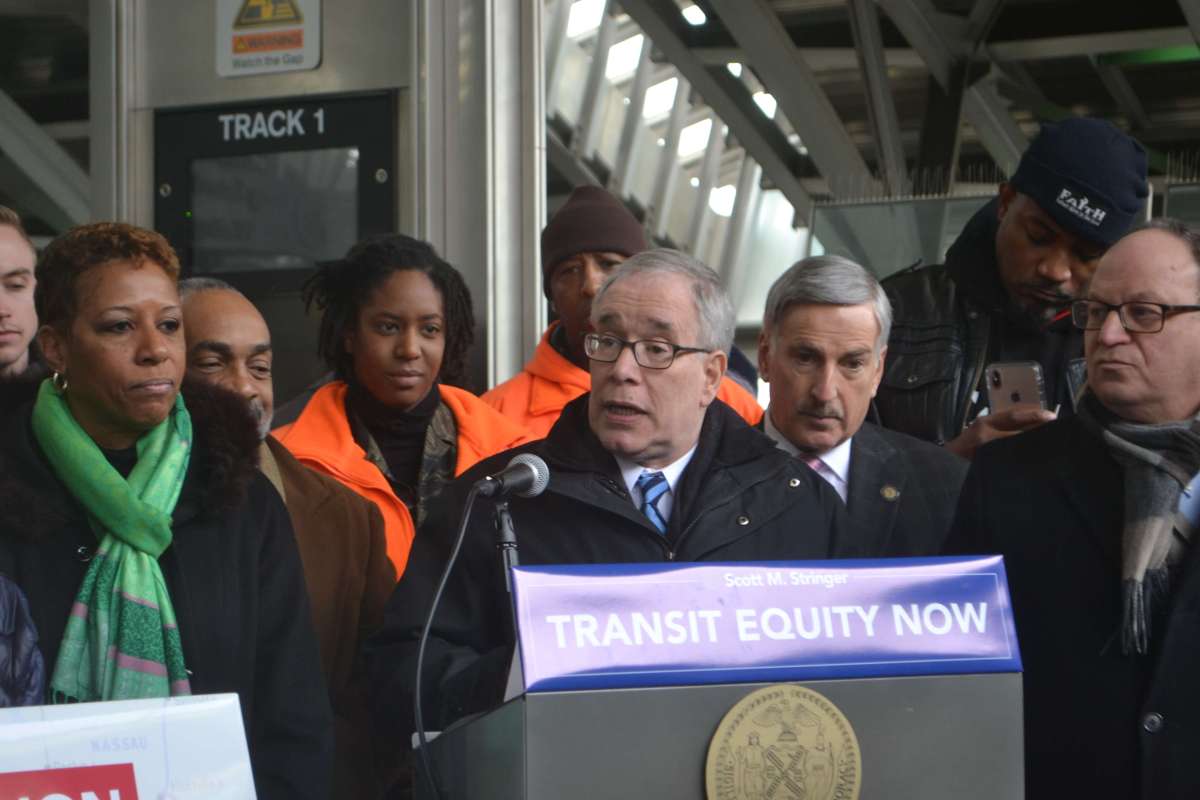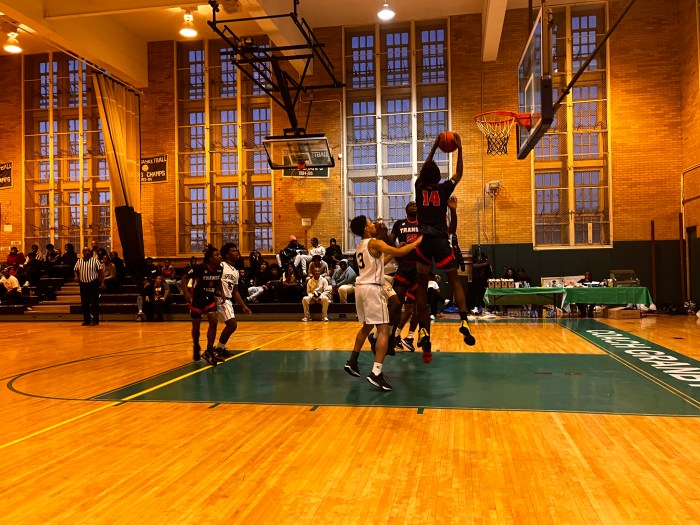Three months after City Comptroller Scott Stringer unveiled his plan for transit equity across all platforms, he brought the fight for fair fares to southeast Queens.
On Jan. 18, Stringer was joined by elected officials and transit advocates at the Jamaica Long Island Rail Road station to call for an end to the steep paywall burdening Queens commuters who take the LIRR.
According to Stringer, LIRR fares from from Flushing, Hollis, St. Albans or Laurelton to Penn Station reach as high as $10.25 per ride. Under his proposal, all in-city commuter rail fares would be brought down to $2.75, or the cost of one MetroCard swipe. Additionally, the plan would allow free bus and subway transfers.
“If you could afford it, in some cases almost $10, you can have fast, reliable transit on the LIRR. Or for the price of $2.75, the price of a MetroCard, you can test your luck on an overcrowded subway that breaks down almost every day,” Stringer said. “You could also take a ride on the slowest bus system in the nation and your commute can take twice as long if you can’t afford the commuter rail and the price of almost $10.”
According to the comptroller, his proposal would help 1.4 residents in the city, including 733,000 in Queens, to afford commuting across the 41 commuter rails in New York City.
Others elected officials in attendance at Friday’s press conference included Queens Borough President Melinda Katz, state Senator John Liu, Assembly members Alicia Hyndman and David Weprin and City Council members Adrienne Adams, I. Daneek Miller and Barry Grodenchik.
“When I woke up this morning and I saw the snow I thought about all the commuters in southeast Queens who either looked at their smartphones or turned the news on to find out what the delays were,” said Hyndman. “Because the commute can take an hour and a half to two hours when the weather is bad.”
The assemblywoman recalled her times as a former commuter who had to pick up her daughter from school. She shared that she often would opt to take the LIRR instead of other modes in order to reach the after-school programs before 6 p.m.
“I wanted to make sure I picked up my daughter on time because if you have children in after-school when you go over 6 o’clock, they charge you. So I would rather pay the money for the railroad than pay the money for extra after-school care,” Hyndman said.
As a daily commuter, Adams vouched for the unreliable service that most commuters have been facing in southeast Queens.
“Many of residents of eastern and southeast Queens have some of the longest commute times to work in the city of New York,” said Adams. “Unfortunately, the MTA’s existing fee structure forces many to spend extra hours on congested subways and buses to make ends meet. Reducing the price of commuter rail fares to the price of a MetroCard in New York City zones is sorely needed for riders in transit deserts to see relief.”
In October 2018, Stringer unveiled a comprehensive report detailing the specifics of his plan and called on the MTA to drop its prices at a press conference in Flushing’s Murray Hill.
The report found that leveling the fares of the Metro-North and LIRR with the subways and buses would “cut commute times in half, improve job access and and extend the reach of the transit system at an estimated price tag of $50 to $70 million.”




































